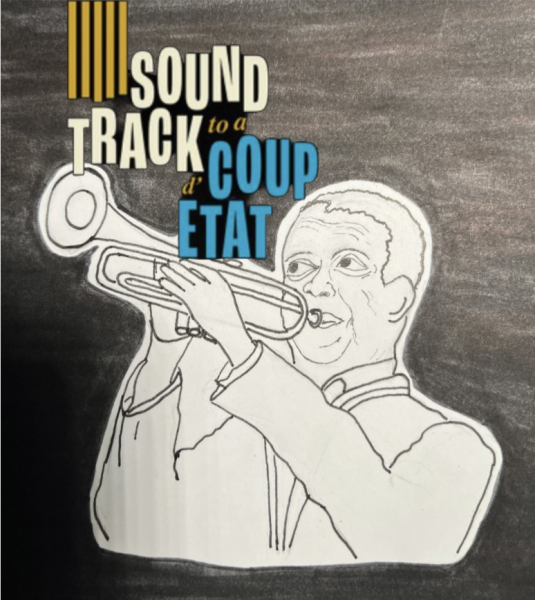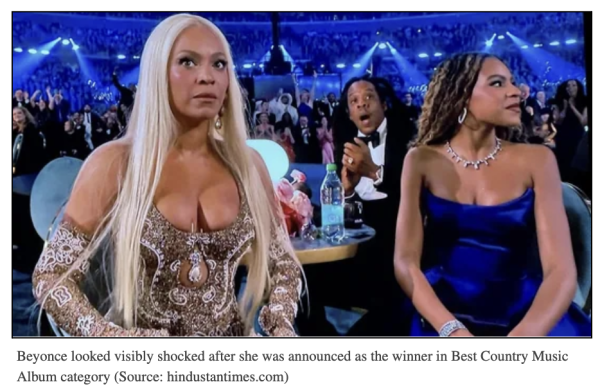Your UNISVerse Guide to the Oscar Noms
In these unsettling times, the anticipation of an award show provides a welcome distraction from doom scrolling. It looks like our latest boost in serotonin is coming soon; not just is it Spring Break, but the Oscars, arguably the most prestigious awards, are airing on your favorite streaming device on March 27th. Though the build-up feels more personal when you’re familiar with all the nominated movies, the newly expanded list means that catching every Best Picture hopeful is harder than ever. To get the low-down on a few of the contenders, check out some of UNISVerse’s reviews!
•••
•••
The Power of the Dog
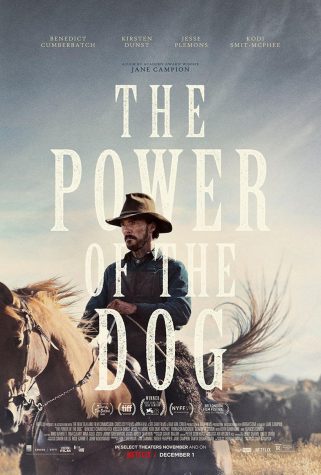
A new entry into the Neo-Western genre, in the same breath as films such as No Country for Old Men and Brokeback Mountain, director Jane Campion’s Power of the Dog has certainly registered on the Academy’s radar, picking up 12 nominations. We follow a duo of cowboys led by Benedict Cumberbach’s Phil Burbank and his brother George (Jesse Plemons) on their family’s Montana ranch. George marries Rose (Kirsten Dunst) who moves in with the pair along with her son, Peter (Kody Smit-MacFee), and the plot only thickens from there.
The film focuses on the stark oppositions of the time: between East and West, tame and wild, thin and thick, polished and unscrubbed. Campion is daring with the vast sweeping wide shots of the New Zealand landscape (subbing in for 1920s Montana) and the brutal treatment of the animals; the film exposes the less seen aspects of the West. The writing is detailed but doesn’t hold the actors down, though it does seem a little over-the-top at times. The film has been a hit with critics and audiences alike, leaving no doubt as to why the Academy has had a response this colored. It’s worth a watch, if you have the time in your day.
Nightmare Alley
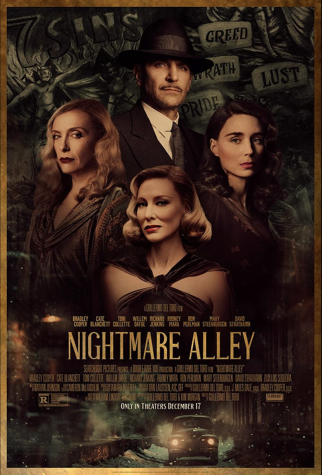
Guillermo Del Toro strikes again with his latest film, Nightmare Alley. A tribute to the Noir classic, Del Toro tells the story of budding ‘carny’ and grifter, Stanton Carlisle played by Bradley Cooper, in a decade-long story of highs and lows. Set in the late 1930s and early 40s, Carlisle wanders from home after the death of his father, taking a bus to Louisiana and making a new home for himself in a traveling road carnival. The first words he utters are to that of the show’s geek, an addict pulled from some hell-on-earth alleyway, dehumanized and ridiculed for just a few drops of alcohol and heroin. Carlisle learns about mentalism and how to feed desperate people lies during ”spook shows” — live theatrical performances prevalent around Halloween between the 1930s and 1960s. This motivates him to take a wild adventure through World War Two-era Buffalo, New York, where he grows the popularity of his act until he is able to serve the upper echelons of society. Ultimately, his ignorance of his own conscience leads him to a pit of despair where he ends up right back where he started.
The cinematography of the film is absolutely marvelous, capturing the colorful, and at times, gaudy carnival Americana aesthetic the film aims to recreate. With the constant tracking shots and camera movement, the viewer almost gets the impression that they are the all-seeing eye, knowing Carlisle from the very beginnings of his failings and waiting for his world to disappear into the abyss. Racking up 4 nominations, it’s a must-see for any fan of Del Toro, the classic Hollywood films of the 1940s, or the oddball viewer who seeks the darkness in the light.
CODA
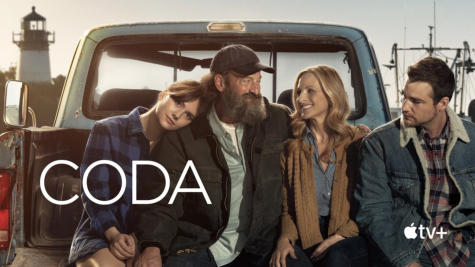
Children of Deaf Adults, or CODA for short, is the latest film by director Sian Heder. It follows a girl, Ruby (Emilia Jones), who is the only hearing person in her deaf family. She, her brother (Daniel Durant), and father (Troy Cotsur), who are both deaf actors, run a family fishing boat and she serves as their translator to all the other longshoremen who work in their New England town. Ruby comes to the realization that she would no longer like to be in the family business, and wants to sing, a medium which her parents don’t understand. Ruby must, along with developing a relationship with her love interest (Ferdia Walsh-Peelo), find a way to resolve all of these conflicts and in the end pursue her dream of singing. CODA is a purely fun, family-oriented movie that you could watch with your parents any day, especially if you like movies with good music.
Drive My Car
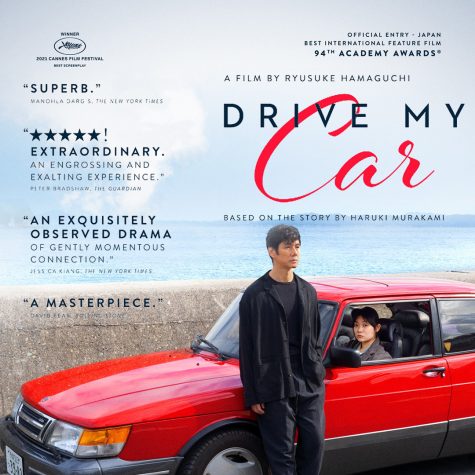
With its stunning shots of the seaside, in-depth character studies, and sophisticated writing, Drive My Car is nothing short of an aesthetic and psychological masterpiece. Directed by Ryusuke Hamaguchi, the movie continues the recent tradition of arthouse East Asian films at the Oscars. Loosely based on Haruki Murakami’s short story of the same name, it centers on an aging actor, Yusuke, as he mourns his wife’s untimely death while preparing for his latest stage production. Because of early-onset glaucoma, he — much to his chagrin — must stop driving and entrust his beloved red Saab to a young female chauffeur, Misaki.
Yusuke is initially cold and skeptical, but this slowly melts as he begins to learn more about Misaki’s past, which seems eerily similar to his own. The bond that eventually develops between the two is intimate, but not for the reason you’re thinking. Hamaguchi resists the temptation to fall into the uncomfortable age-gap romance trope, and instead opts for a genuinely platonic, father-daughter-esque dynamic. This makes the characters’ relationship more believable and moving, and also allows the meticulous buildup of tension to fully play itself out right until the end, instead of cut short by a predictable conclusion.
The bulk of the movie time is taken up by driving scenes, and another large chunk focuses on Yusuke’s rehearsals of a stage production of Chekhov’s Uncle Vanya. The show-within-a-show concept may seem eye-rollingly reminiscent of Hollywood’s notorious “movies about making movies,” but Drive My Car is different. The film’s focus on stage acting, rather than filmmaking, makes it less self-indulgent and more celebratory of the often underappreciated art form. In addition, Yusuke’s avant-garde rendition of the classic play gives insight into the painstaking and demanding craft of experimental theater professionals, which may be novel and intriguing to many viewers, like it was for me. These qualities therefore make the movie appreciably more original than others of its genre.
The setting of Yusuke’s rehearsals on a small, remote island in Southern Japan, also gives the film the opportunity to explore the landscape of the region. There are stark panoramic views of snowy cliffs, clear oceans, and rolling flower fields, which mirror the quiet drama of the screenplay. The cinematographer shows, perhaps for one of the first times in popular live-action cinema, a more rugged and natural side of Japan, different from the glow-in-the-dark cityscapes most Western viewers may be accustomed to.
Though it clocks in at nearly three hours, Drive My Car remains engaging up until the last minute. It’s at once a masterclass in acting, screenwriting, and direction, and a visual cornucopia that manages to steer clear of self-consciousness and overused archetypes. You can watch it in a theater near you (the big screen probably best does it justice) or stream it on HBO Max!

I'm in the class of 2023, I've lived in New York City my whole life and have been at UNIS since JA. This impacts a lot of the writing I do relating to...

Hi! I'm Maya, and I'm in the class of 2023. I tend to write about Arts and Culture topics, and you can usually find me tuning in to the latest podcast...




